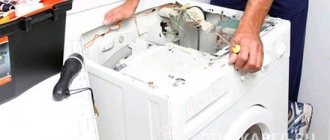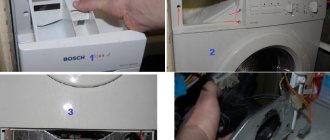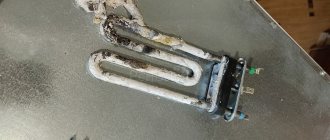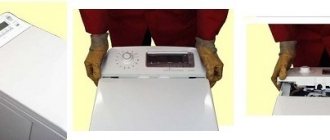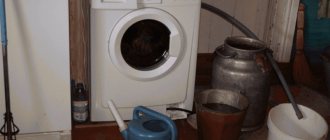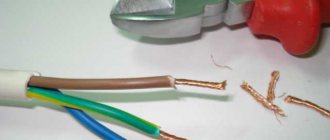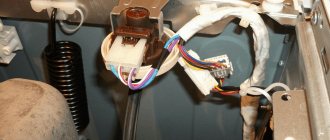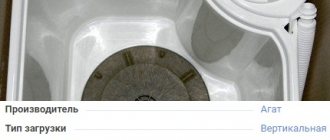While the washing machine is running, do you hear a grinding noise, as if something is sliding on metal? This is a sign that a foreign element has entered. Often, bones from corsets and bras get into the machine. Such a small object is sharp, so it can seriously damage the components of the equipment and cause damage to the unit. To prevent this from happening, it is necessary to urgently interrupt the operation of the washing machine and remove the “non-original” item.
Read the article about the dangers of a bra pit that has penetrated into the drum compartment of the machine, as well as how to remove it from the washing machine yourself. At the end, it also talks about measures that will help prevent “harmful” items from getting into the washing machine.
Frame wire for a bra: what is it made of and what harm does it cause?
At first glance, if you compare the size of the machine and the linen accessories, it seems that it is unlikely to do any harm. But the point is not in size, but in the material from which the bone is made.
Most often, frames or bones for linen are made of metal or coated steel.
Getting stuck in the tank of the machine, such corsetry parts begin to rust, stain water and washable items, and can tear linen. And these are even the easiest of troubles. Much worse is that a sharp metal bone can easily pierce the washing machine tank, damage the coating of the heating element, tear the cuff or drain pipe.
If the fittings are made of plastic, then they are less destructive.
Although, when a plastic bone has fallen deep into the washing machine, it can also make a mess. For example, pierce the same drain pipe or slip into the pump and disable it.
Where to look for a bra wire
An uninvited guest gets into the washing machine, falls through and gets stuck in different places:
- in the perforation of the drum;
- at the bottom of the tank (the most common case): under the heating element or between the bends of the heater tube;
- in the space between the drum and the tank (top, side, back);
- in the drain pipe, filter or pump (very rarely).
Depending on the place where the bra wire is, you can get it out in five ways.
Attention! Before you start disassembling the washing machine, unplug it from the power supply! Follow safety precautions, this will protect you from injury and electric shock.
The first method is how to remove a bone from a washing machine through the drum
Can be used if the bone has just begun to fall through and sticks out with the tip outward from the perforation of the drum.
To locate the part, examine the drum from the inside over the entire surface with your hand. It is very difficult to see thin fittings in shiny metal, but they can be easily identified by touch.
Hook the tip of the bone with tweezers, narrow-nose pliers or wire and pull it out.
The second method is to remove the bone through the heating element
Attention! This method is suitable for horizontal washing machines with a rear heating element, when the heat element is located under the tank at the bottom.
You felt the drum and found nothing sticking out. This means that the accessories that “escaped” from the laundry have already slipped into the tank. From repair experience, craftsmen know that when a bone from a bra falls into the washing machine, most often it falls to the bottom of the tank and gets stuck in the TEN area. And you can get it out by removing the heating element from the washing machine tank. In fact, you need to remove the heating element, find and pull out the bone, and then put the heater in place.
For this:
- Remove the back cover from the machine.
- Turn off the power to the heating element, remove the terminals from the contacts. Typically, three wires are suitable for the heater: phase, neutral and ground. Phase and neutral have a terminal contact; the grounding contact can be secured with a nut on the central stud.
- Loosen the fastening nut on the stud. You will see it when you remove the grounding. Unscrew the nut until it is flush with the end of the stud (there is no need to remove it at all).
- Carefully press the pin inside the heating element so that it “sinks” up to the nut.
- Move the heating element and remove it from the socket (sometimes serious effort is required).
Attention! Do not swing the heating element by its contacts or pry it with a screwdriver. You will damage the contact pins or sealing collar.
In half of the cases, the bone is removed along with the heating element because it gets stuck in the loop of the heater tube. In other cases, it is found at the bottom of the tank under the installation site. Often, instead of one fitting, there are two, or even three.
Housewives do not always associate the loss of a frame from a cup with the washing machine, and a bone can slip into the tank without noise or knocking, without showing signs of its presence. Therefore, it is located only when disassembling the heater, behind.
Inspect the TEN carefully for damage. Sometimes a metal strip breaks the heater very badly, literally into pieces.
But more often it leaves small dents or scratches on the tube, which are hardly noticeable. And the owners of the machine put the damaged element in the tank, and then are forced to carry out serious repairs to the equipment due to a breakdown of the heater, electrical short circuit and other surprises. Therefore, it is safer to immediately change even a slightly dented heating element.
When the bone is pulled out and the heater is normal, you can put it back in place.
The procedure will be the reverse of disassembly:
- Push the center pin outward by pressing on the inner mounting plate.
- Insert the heating element into the hole, gently pressing the cuff.
- Screw the fastening nut onto the stud. Do not tighten it all the way, you will compress the seal and it will leak water from the tank. It is better to tighten it a little looser and then tighten it if necessary if moisture appears in the hole. But, as a rule, the seal seals the tank well and additional tightening of the nut is not necessary.
- Connect the power supply to the TEN.
- Plug in the machine and run a test wash without replacing the back cover. To check if there is a leak from the tank through the heater socket.
Attention! Be careful not to touch the inside of the machine with the lid removed while washing.
If everything is in order, there are no leaks, secure the lid, having first disconnected the washing machine from the mains.
We take the bone out of the washing machine through the drain
When the bone from the bra did not fall to the bottom of the washing machine tank, but got stuck in the pipe intended for draining, then it cannot be pulled out by removing the heating element: only through the pipe. To do this you will need to remove it. In most washing machines, the drain pipe is located at the bottom: it can be reached through the bottom of the washing device.
Important: in order to get the bone that fell out of the bra out of the washing machine through the drain, you will need free space, so you will need to pull the machine into the middle of the room or completely remove it from the bathroom/kitchen if there is not enough space.
You need to remove the powder tray from the washing machine (for example, LG FH2U1HBS2), and then put the equipment on its side. Now you need to unscrew the bolts that secure the bottom of the unit and remove the cover.
Note: in washing machines, fastening bolts are not always used; sometimes they are replaced with special clamps. However, removing them is no more difficult than unscrewing screws.
The pipe used to drain liquid from the washing machine is attached to the tank and pump. To remove it, you will need to loosen the clamps. And then - get the bone.
Advice: once the pipe has been removed, it is advisable to clean it.
To return the washing machine (for example, CANDY AQUA 08351D/2-S) to working condition, this drain part must be mounted back: you will need to install it, tighten the clamps firmly, secure part of the bottom with clamps and put the machine in place.
Life hack: if the pipe cannot be removed, the pump is in the way. It is necessary to unfasten the sensor from it, tighten the two screws that hold the pump, and remove it. Then comes the turn of the pipe.
The third method is how to get the bone through the drain pipe
This method can be used if you do not want to remove the heating element or when it is located under the front cover, for example, in Samsung machines. Disassembling such a model causes difficulties for equipment owners - they need to remove the cover, cuff, front panel, etc. to get to the heater. Therefore, it is easier to remove the mounting clamp and look into the tank through the pipe.
The procedure for washing machines without protecting the housing from leaks will be as follows:
- Place the washing machine on its side.
- We remove the bottom, if there is one: unscrew the fasteners or snap off the latches.
- Loosen the fastening elements on the pipe (clamp or ring) and remove it from the ledge of the tank.
- We inspect the drain hole and the visible part of the heating element and tank. We take out the bone from the bra. Sometimes it falls out of the pipe on its own, but more often you need to look for the fittings by shining a light into the hole.
After removing the foreign object from the tank, we install the pipe in place, fix it with a clamp, secure the bottom, and turn the machine over to its normal position.
If you are the happy owner of a washing machine with the Aquastop system for protecting the body from leaks, then we recommend getting to the drain pipe through the back wall. In this case, of course, you won’t be able to look into the hole in the tank onto which the pipe is placed; you’ll have to go by touch, but removing the bottom where the Aquastop is installed is still a task, even for a master. After all, you first need to dismantle the leakage protection system, and for this you will need to disassemble half the machine.
The described method can help remove a bra wire from a washing machine with a front-mounted heating element without much disassembly, but it does not always work. The drain hole where the pipe is attached is quite narrow. If the bone does not lie directly above it, but far to the side, higher or lower, it is difficult to see it and, even more so, to pick it up. In addition, if removing the bottom of the machine is problematic (for SMA with protection of the body from leaks), then the possibilities of the search operation are reduced even more: it is inconvenient to crawl up to the tank from below, you have to search for a bone by touch, as far as your fingers can reach, etc.
What to do?
First of all, the owner of a washing unit (for example, Zanussi ZWSE680V) needs to find the bone in order to know exactly how to get it out: will it be necessary to disassemble the washing machine or will everything be done without disassembling.
If you managed to catch the bone of a corset or bra in the washing machine drum, this is good luck. All that remains to be done is to check whether the cuff framing the hatch is torn. If it's not there, look in the tank.
Armed with a flashlight, you need to look into the tank of the washing machine (for example, Electrolux EWS1066CUU) and look through the small holes at the bottom of the tank. To do this, you will have to stick your head into the hatch of the car. Usually the bone that got inside can be seen.
Life hack: do not hold the flashlight in your hand, but place it in the drum so that it illuminates the bottom of the tank through the holes.
If the bone is not visible, you should try to manually turn the drum and inspect the area behind the wall. No bones? Most likely, it “hid” between the parts and did not fall to the bottom. This needs to be fixed:
- unscrew the fastening bolt and remove the washer pulley;
- screw the bolt again, but not all the way;
- Using a small hammer (preferably rubber), gently “tap” the side of the shaft through a dense object, for example, a wooden cutting board, until the shaft and drum move;
- take your time and gently rotate the drum until the foreign object falls to the bottom of the tank.
Fifth method - remove the bone from the drainage system
It happens that the bone safely slips through the tank with the heating element and ends up in the drain system of the machine - in the pipe, filter and even the pump.
We are mainly talking about plastic accessories for ladies' corsetry. It, unlike metal, is not so rigid and easily breaks in the drum, without causing significant damage to the parts of the washing machine. That’s why it “flies” so far. There is a bone in the filter
First, check the filter. It is usually located in the lower left corner of the front of the car behind a special hatch.
To clean the filter and possibly remove the seed:
- Open the hatch. It is fixed with a latch, so you need to press the cover or carefully pry it off with a screwdriver.
- Slide a dry cloth under the washing machine in the area of the filter or tilt the SMA back, resting it on the wall, and place a container so that the remaining water does not spill onto the floor.
- Unscrew the filter and pull it out of the hole.
- Inspect the filter and the hole, the bone may be there or there. At the same time, remove any other small debris that has gotten into the car. Wipe the filter installation hole and rinse it with running water.
If the bone is found, then everything is in order.
If not, look directly into the pump (in the case when it is located directly behind the filter in front). You may see a piece of plastic sticking out and you will be able to remove it. A bone in the pipe
If nothing sticks out of the pump and the machine drains water normally, then most likely a bone is stuck in the pipe. There is a third way to get it from there.
But first you need to put the filter in place and close the hatch.
Tighten the filter carefully and at the same time tightly so that the machine does not leak during washing. A bone in the pump
The first sign that an “uninvited guest” is in the pump is that the machine either does not pump water out of the tank or does not drain well. The pump may make a lot of noise and grinding noise. This is not good, but if the pump crackles and goes completely silent, it’s even worse. Silence indicates that the engine has burned out and the pump will have to be replaced. Therefore, try to deal with the situation while the pump is still alive and making a lot of noise.
To remove a foreign object you need to get to the pump and open it.
In different brands of washing machines, the pump is located differently. And you need to get to it in different ways.
- In most cars of the brands Ariston, Ardo, Veko, Indesit, Samsung, Candy, Whirpool, LG, the pump is located below the filter. Therefore, you can first inspect the pump through it. For full access, it is most convenient to place the machine on its side and carry out all operations through the bottom.
- In the Electrolux and Zanussi brands, the way to the pump is through removing the back panel, because the pump is located closer to it.
- The “Germans” (AEG, Bosch, Siemens) have the most difficult path. You need to remove the top cover and front panel, as well as pull out the dispenser, remove the locking of the hatch cuff and disable the door lock.
Attention! We recommend contacting specialists immediately if you have German equipment. Since disassembly and assembly in these brands is complex and requires experience and accuracy. You can damage the car if you do it yourself
Disassembling the pump
The design of the pumps is practically the same. To inspect the “insides” you need:
- Prepare a container for water or a rag. When you disconnect the pump, water will flow out of it. To prevent a puddle from ending up on the floor, perform disassembly operations over a basin or place a rag.
- Disconnect the pump from power. To do this you will need to disconnect the connector.
- Remove the screws that secure the pump to the housing.
- Disconnect the drain hose on one side and the pipe on the other by loosening the clamps.
- Disassemble the pump. To do this, you need to unscrew the volute from the body and pull out the engine and impeller from it.
Now inspect the pump from the inside. The bone may be located between the impeller blades or pressed against the casing. Pull it out and inspect the impeller itself for damage. If there are any, then you will have to change the pump (impellers are not sold separately). Even with a “live” engine, a pump with a broken impeller will not drain water.
It is rare, but it happens that the bone did not have time to disable the pump, but simply slowed down its rotation. Then you are in luck and after removing the “alien” you can assemble the pump and put it in place.
Check the pump for leaks before assembling the machine completely, plug it in and put it on a quick wash.
Be careful! Do not touch the internal parts of a working washing machine that is not fully assembled.
The wire from the bra fell into the washing machine and lies quietly - take it out or leave it there
Sometimes a bone clearly disappeared in the car, the owner pulled out her bra and noticed. But at the same time, the washing machine does not make noise, does not tear things and works like a clock. What to do in this case, should you search and pull it out or leave the “alien” inside?
Theoretically, you can leave it, but craftsmen find deposits of bones in machines when disassembling them due to other faults. But remember that even the fittings lying quietly in the tank are a foreign object that should not be there.
A metal or plastic bone at the bottom will eventually become covered with dirt (hair, dust from clothes, threads), which will smell unpleasant and you will have to think about how to remove the musty smell from the washing machine.
In addition, metal lying in a damp place and constantly getting wet during washing/rinsing will begin to rust and stain the water in the tank, which will contaminate things. Removing rust stains from laundry is very difficult, and sometimes even impossible. That is, the damaged item will have to be thrown away.
A plastic bone is also dangerous because when it comes into contact with a heating element, it begins to melt when heated and smells like burning. This can ultimately lead to damage to the heat element.
Masters recommend! If a bone is stuck in the washing machine, remove it as quickly as possible. For example, after 1-2 washes. Otherwise, big problems may await you due to the extra detail.
We remove the foreign object through the hole for the heating element
The first thing you need to do is unfold the washing machine in such a way as to gain access to its back wall. Is there a special hatch for access to internal components? Great: open it. No hatch? Unscrew the mounting screws and remove the back wall of the washing machine, for example, Electrolux EWM1044SEU.
Look at the drum pulley - the large wheel behind which the tank housing is located. The large wires of the heating element should be visible under the “wheel”. The heating part itself is located inside the tank.
The heating element must be removed: disconnect the electrical cables from the contacts, unscrew the fastening nut located between the contacts. You will need to firmly grasp the heating part with both hands and pull it towards you, swinging it in different directions.
The part has been removed: it is easy to reach through the hole to the bottom of the tank and pull out the unfortunate bone using a wire hook.
Attention! This method is suitable for washing machines where the heating element is located in the rear of the tank, for example, units from the company. For models from Siemens and Bosch brands, the heating part is located at the front: it is inconvenient to remove the front cover.
The bone is removed from the washer - put the heating element back, performing the steps described above in reverse order. The main “trick” here is to get the heating element into the bracket intended for it, which is located inside the tank.
Made? Now you need to tighten the nut and fill the washing machine tank with water to check the tightness.
Advice: once the heating element is removed, clean it, and at the same time the bottom of the machine’s reservoir, from scale, using citric acid or a special product, for example, Electrolux E6SMP106.
What is the danger of getting a bone into the drum?
Smell, dirt, rust on clothes, torn items are minor troubles compared to what a bra wire that has fallen inside the washing machine can do.
We already talked about serious problems when we figured out what kind of object this is - a bra wire. Now let's take a closer look at them.
Linen accessories in the washing machine:
- Deforms the drum and damages (pierces) the tank. A sharp metal plate ruptures the drum cells or flies into the tank wall like a bullet, making a hole. As a result, you have to change the tank or even buy a new washing machine.
- Destroys the heating element or damages its surface , which leads to breakdown of the heating element. When a metal bone gets stuck at one end in the perforation and the other ends on the heating element, it cuts the heater tube like a knife. If the fittings fall inside the loop, it breaks the heat element into pieces. As a result, you have to change the heating element.
- It tears the tank cuff and causes a leak. As a result, you need to seal the original cuff or replace it with a new one.
- Pierces the drain pipe . If a bone gets into the drain hole, it can pierce the rubber pipe with its sharp end. Repairing holes in it is difficult and unreliable, so it cannot and must be replaced.
- Damages or disables the pump. Most often, plastic bones slip into the pump; they break into pieces quite easily when they get into the drum. Once in the pump, bone fragments can damage or jam the pump blades. In the case of a “wedge”, the pump will hum strainedly, but will not pump water. If the obstacle is not removed in time, the engine of the unit will burn out and you will have to install a new pump.
Plastic and iron bones in the washing machine: what's the catch?
Plastic bones inside the machine (for example, Indesit IWSC 51052 A UA) are the most harmless option, because they cannot scratch the body too much. But it still causes damage. In addition, it is more difficult to get a plastic object than an iron one, because this material is more flexible and pliable.
An iron bone is more likely to scratch the inside of the washer casing. The machine will begin to rust, and characteristic marks will appear on the laundry. Such consequences are aggravated when the unit is located in a damp area or is not ventilated after the cycle has completed.
A foreign object can damage the cuff framing the hatch of the washing machine - this is a minor nuisance, but you still have to use a sealant at a minimum or change the cuff at a maximum.
Note: a jammed drum and stopping washing is another consequence of a bone falling out of a bra.
A foreign object that gets into a washing machine (for example, Zanussi ZWSE7100VS) can damage the insulator made of plastic that covers the water heating element or the seal. Broken heating element insulation leads to a short circuit.
If the bone stands across the tank, it can pierce the tank by catching on the drum. This happens when the washing machine drum rotates quickly, for example during a spin cycle. The machine will leak and will have to be disassembled to repair the hole.
If the wire from the bra stands across the drum and the heating element when the washing machine is running, during spinning or intensive washing it can tear off the heating element: the heating element will have to be replaced.
As we can see, the consequences are serious: if you “start” the problem and do not get the bone out on your own in time, then the owner will have to say goodbye to the washing machine (even with such a “cool” one as the Gorenje W 7513/S1), and if a short circuit occurs, then to part of the wiring - at best.
Interesting read: TOP 13 popular automatic washing machines
What to do if another foreign object gets into the washing machine
The bra pit in the washing machine is not the only “uninvited guest.” During inspections, craftsmen find coins (even anniversary coins!), buttons, pins, curtain fittings, Lego parts, bolts, screws, nails and other small items. The dimensions of this “good” are smaller than those of a stone and they are less likely to linger in the perforations of the drum or at the bottom of the tank.
Their favorite habitats are:
- Cuff near the door hatch. “Creeping small fry” easily gets into the fold and remains there.
- Drain pipe. There are small metal parts, screws, and nails left in it.
- Drain filter. There may be a warehouse of coins, nuts and screws, and small plastic items. Everything that slipped through the pipe, but did not have time or could not fly into the pump.
- Water pump. It carries light plastic parts, such as parts of a children's construction set, matches, small fittings, and buttons.
- Drain hose. Matches, small pins, and plastic dowels fly through the pump.
Since the size of this “good” is small, they usually do not cause significant harm, such as breaking the heating element or damaging the tank. But, for example, a nail or self-tapping screw is quite capable of damaging the heating tube, unraveling the perforation of the drum, or even making a hole in the tank. And it’s easy to break the pump or cause a blockage.
Therefore, if there is extraneous noise in the machine, pump noise or other strange sounds, it is worth looking to see if there are any foreign “guests” in the inside of the washing machine. If it’s difficult to handle on your own, call a repair specialist.
Ways to remove a foreign object with parsing
If using wire, a magnet and pliers it was not possible to remove the wire from the bra from the machine (for example, such as the LG FH296WDS), then you will have to do this by choosing one of two other methods: through the hole for the heating element and through the drain. In any case, the washing equipment will have to be disassembled.
One rule for two methods: unplug the washing machine!
